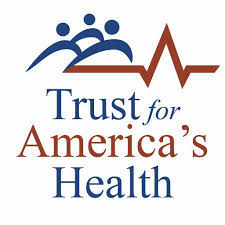emergency preparedness
See the following -
Pandemic and all-hazards preparedness, response law emboldens U.S. disaster recovery efforts
Kim Reilly | Homeland Preparedness News | June 25, 2019
 The Pandemic and All-Hazards Preparedness and Advancing (PAHPA) Innovation Act, S. 1379, became law on Monday with the president's signature, prompting accolades from national stakeholders, company executives and federal lawmakers. The far-reaching law ensures the United States will be better prepared to respond to a wide range of public health emergencies, whether man-made or occurring through a natural disaster or infectious disease. Overall, the law aims to bolster the nation's health security strategy, strengthen the country's emergency response workforce, prioritize a threat-based approach, and increase communication across the advanced research and development of medical countermeasures (MCMs), among numerous provisions contained in the law.
The Pandemic and All-Hazards Preparedness and Advancing (PAHPA) Innovation Act, S. 1379, became law on Monday with the president's signature, prompting accolades from national stakeholders, company executives and federal lawmakers. The far-reaching law ensures the United States will be better prepared to respond to a wide range of public health emergencies, whether man-made or occurring through a natural disaster or infectious disease. Overall, the law aims to bolster the nation's health security strategy, strengthen the country's emergency response workforce, prioritize a threat-based approach, and increase communication across the advanced research and development of medical countermeasures (MCMs), among numerous provisions contained in the law.
- Login to post comments
Technology Breakdowns A Core Strategic Concern For Hospitals
Russ Banham | Healthcare Finance News | May 21, 2014
Not just a hurricane or tornado can shut down the IT infrastructure; man-made attacks threaten as well
- Login to post comments
TFAH: Persistent Underfunding of America's Public Health System Makes the Nation Vulnerable to Disasters and Puts Lives at Risk
Press Release |
Trust for America’s Health |
April 24, 2019
 Chronic underfunding of the nation's public health infrastructure has left the nation vulnerable to serious health and safety risks, according to a new report released today by Trust for America's Health...The federal government, primarily through the U.S. Centers for Disease Control and Prevention (CDC), provides critical support for the nation's public health infrastructure including by funding a substantial portion of state and local public health programs. But, between Fiscal Year (FY) 2010 - Fiscal Year 2019, the CDC's budget fell by 10 percent when adjusted for inflation. Cuts to the CDC budget have direct impacts on state and local public health departments' budgets.
Chronic underfunding of the nation's public health infrastructure has left the nation vulnerable to serious health and safety risks, according to a new report released today by Trust for America's Health...The federal government, primarily through the U.S. Centers for Disease Control and Prevention (CDC), provides critical support for the nation's public health infrastructure including by funding a substantial portion of state and local public health programs. But, between Fiscal Year (FY) 2010 - Fiscal Year 2019, the CDC's budget fell by 10 percent when adjusted for inflation. Cuts to the CDC budget have direct impacts on state and local public health departments' budgets.
- Login to post comments
The Sequoia Project’s Emergency Preparedness Information Workgroup Publishes Health IT Pandemic Response Planning Recommendations - The Sequoia Project
Press Release |
The Sequoia Project |
February 28, 2022
 The Sequoia Project’s Emergency Preparedness Information Workgroup (EPIW) today published Pandemic Response Insights and Recommendations, a free whitepaper for local, state, and federal emergency preparedness and public health officials and their partners. The workgroup, consisting of emergency preparedness, response, and public health experts, convened over several months to discuss gaps in current solutions. The workgroup recommended ways to make information more readily available to support a more robust and coordinated response to future emergencies.
The Sequoia Project’s Emergency Preparedness Information Workgroup (EPIW) today published Pandemic Response Insights and Recommendations, a free whitepaper for local, state, and federal emergency preparedness and public health officials and their partners. The workgroup, consisting of emergency preparedness, response, and public health experts, convened over several months to discuss gaps in current solutions. The workgroup recommended ways to make information more readily available to support a more robust and coordinated response to future emergencies.
- Login to post comments
Upgrading the PULSE Emergency Response Tool to a Community Edition
By Rachel Abbey | September 27, 2021
 Seven years ago the Office of the National Coordinator for Health Information Technology (ONC) began work on the Patient Unified Lookup System for Emergencies (PULSE). PULSE is an effort to create national resilience by improving first responder access to patient electronic health information they need to provide services and ensure public health during disasters, including public health emergencies. Recently, ONC launched a new, code-only technical solution called PULSE-Community Edition (PULSE Community) that builds on the original PULSE code. PULSE Community enables first responders and other response personnel (e.g., epidemiologists, emergency medical services, and health care volunteers) to securely access vital health information they need during emergencies and disasters from connected health care organizations.
Seven years ago the Office of the National Coordinator for Health Information Technology (ONC) began work on the Patient Unified Lookup System for Emergencies (PULSE). PULSE is an effort to create national resilience by improving first responder access to patient electronic health information they need to provide services and ensure public health during disasters, including public health emergencies. Recently, ONC launched a new, code-only technical solution called PULSE-Community Edition (PULSE Community) that builds on the original PULSE code. PULSE Community enables first responders and other response personnel (e.g., epidemiologists, emergency medical services, and health care volunteers) to securely access vital health information they need during emergencies and disasters from connected health care organizations.
- Login to post comments